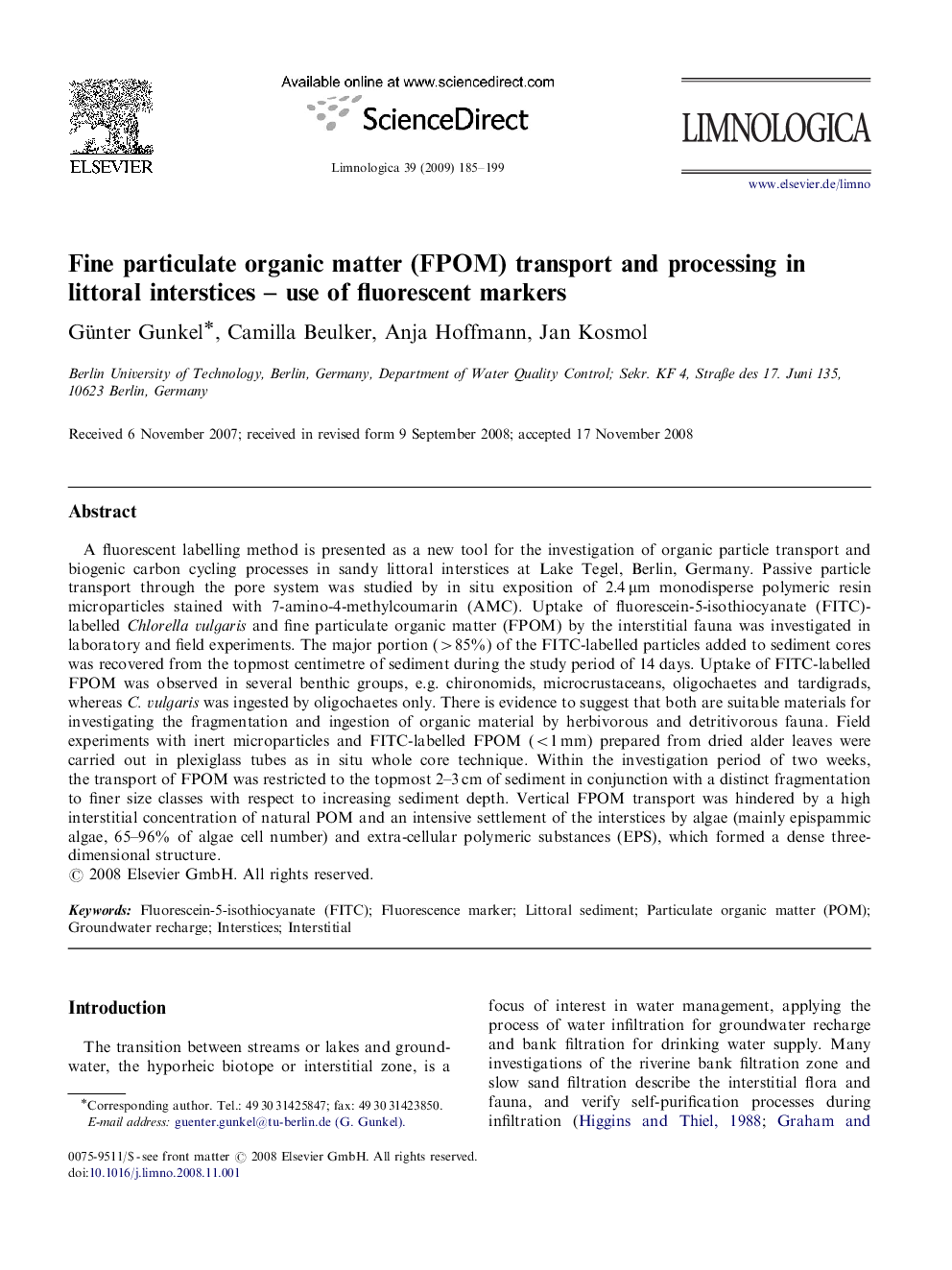| کد مقاله | کد نشریه | سال انتشار | مقاله انگلیسی | نسخه تمام متن |
|---|---|---|---|---|
| 4400659 | 1306985 | 2009 | 15 صفحه PDF | دانلود رایگان |

A fluorescent labelling method is presented as a new tool for the investigation of organic particle transport and biogenic carbon cycling processes in sandy littoral interstices at Lake Tegel, Berlin, Germany. Passive particle transport through the pore system was studied by in situ exposition of 2.4 μm monodisperse polymeric resin microparticles stained with 7-amino-4-methylcoumarin (AMC). Uptake of fluorescein-5-isothiocyanate (FITC)-labelled Chlorella vulgaris and fine particulate organic matter (FPOM) by the interstitial fauna was investigated in laboratory and field experiments. The major portion (>85%) of the FITC-labelled particles added to sediment cores was recovered from the topmost centimetre of sediment during the study period of 14 days. Uptake of FITC-labelled FPOM was observed in several benthic groups, e.g. chironomids, microcrustaceans, oligochaetes and tardigrads, whereas C. vulgaris was ingested by oligochaetes only. There is evidence to suggest that both are suitable materials for investigating the fragmentation and ingestion of organic material by herbivorous and detritivorous fauna. Field experiments with inert microparticles and FITC-labelled FPOM (<1 mm) prepared from dried alder leaves were carried out in plexiglass tubes as in situ whole core technique. Within the investigation period of two weeks, the transport of FPOM was restricted to the topmost 2–3 cm of sediment in conjunction with a distinct fragmentation to finer size classes with respect to increasing sediment depth. Vertical FPOM transport was hindered by a high interstitial concentration of natural POM and an intensive settlement of the interstices by algae (mainly epispammic algae, 65–96% of algae cell number) and extra-cellular polymeric substances (EPS), which formed a dense three-dimensional structure.
Journal: Limnologica - Ecology and Management of Inland Waters - Volume 39, Issue 3, September 2009, Pages 185–199